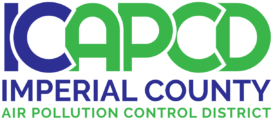Regulations
Rule
Title
RULE CITATION
DEFINITIONS
PUBLIC RECORDS
INSPECTION OF PUBLIC RECORDS
ADMINISTRATIVE PENALTIES
ENFORCEMENT
ABATEMENT
LAND USE
INSPECTIONS
SOURCE SAMPLING
STACK MONITORING
EQUIPMENT BREAKDOWN
NOTICE TO COMPLY
CIRCUMVENTION
SEVERABILITY CLAUSE
LEGAL APPLICATION AND INCORPORATION OF OTHER REGULATIONS
EMISSIONS STATEMENT AND CERTIFICATION
Rule
Title
PERMITS REQUIRED
EXEMPTIONS
TRANSFER
APPLICATIONS
CANCELLATION OF APPLICATIONS
PROCESSING OF APPLICATIONS
NEW AND MODIFIED STATIONARY SOURCE
FEDERAL MAJOR MODIFICATION
PERMIT TO OPERATE
IMPLEMENTATION PLANS
DENIAL OF APPLICATION
APPEALS
ANNUAL RENEWAL
TEMPORARY PERMIT TO OPERATE
EMISSION REDUCTION CREDIT BANKING
MOBILE SOURCE EMISSION REDUCTION CREDIT BANKING
PAVING UNPAVED PUBLIC ROADS EMISSION REDUCTION CREDITS (PERCS)
COMMUNITY BANK AND PRIORITY RESERVE
CONSTRUCTION OR RECONSTRUCTION OF MAJOR STATIONARY SOURCES THAT EMIT HAZARDOUS AIR POLLUTANTS
LARGE CONFINED ANIMAL FACILITIES
Rule
Title
PERMIT FEES
FEE SCHEDULES
SCHEDULE 1 - ELECTRIC MOTOR HORSEPOWER SCHEDULE
SCHEDULE 2 - FUEL BURNING EQUIPMENT SCHEDULE
SCHEDULE 3 - ELECTRICAL ENERGY SCHEDULE
SCHEDULE 4 - STATIONARY CONTAINER SCHEDULE
SCHEDULE 5 - GASOLINE DISPENSING EQUIPMENT
SCHEDULE 6 - GEOTHERMAL SCHEDULE
SCHEDULE 7 - INCINERATORS
SCHEDULE 8 - APPLICATION OF MATERIAL CONTAINING ORGANIC SOLVENTS
SCHEDULE 9 - MISCELLANEOUS SCHEDULE
SCHEDULE 10 - CREMATORIES AND PATHOLOGICAL INCINERATORS
SCHEDULE 11 - MUNICIPAL SOLID WASTE LANDFILLS
ALL SCHEDULES
ANALYSIS FEES
TECHNICAL REPORTS - CHARGES FOR
HEARING BOARD FEES
AGRICULTURAL BURNING PERMIT FEES
LARGE CONFINED ANIMAL FACILITY FEES
EMISSION REDUCTION CREDIT (ERC) BANK FEES
AIR TOXIC "HOT SPOTS" INFORMATION AND ASSESSMENT
OPERATIONAL DEVELOPMENT FEES
Rule
Title
FUEL BURNING EQUIPMENT - OXIDES OF NITROGEN
STATIONARY GAS TURBINE(S) - REASONABLY AVAILABLE CONTROL TECHNOLOGY (RACT)
BOILERS, PROCESS HEATERS AND STEAM GENERATORS
INTERNAL COMBUSTION ENGINE(S)
EMISSIONS OF OXIDES OF NITROGEN FROM WALLBOARD KILNS
NATURAL GAS-FIRED WATER HEATERS, SMALL BOILERS AND PROCESS HEATERS
NATURAL GAS-FIRED WATER HEATERS
OPACITY OF EMISSIONS
GENERAL LIMITATIONS ON THE DISCHARGE OF AIR CONTAMINANTS
SULFUR COMPOUNDS EMISSION STANDARDS, LIMITATIONS, AND PROHIBITIONS
NUISANCES
FROST PROTECTION
INCINERATORS
SOIL DECONTAMINATION OPERATIONS
ORGANIC SOLVENT CLEANING
STORAGE OF REACTIVE ORGANIC COMPOUND LIQUIDS
TRANSFER AND STORAGE OF GASOLINE
OIL-EFFLUENT WATER SEPARATORS
ORGANIC SOLVENTS
DISPOSAL AND EVAPORATION OF SOLVENTS
REDUCTION OF ANIMAL MATTER
BEEF FEEDLOTS formerly LIVESTOCK FEED YARDS
OPEN BURNING
ARCHITECTURAL COATINGS
AEROSPACE COATING OPERATIONS
CUTBACK ASPHALT AND EMULSIFIED PAVING MATERIALS
AUTOMOTIVE REFINISHING OPERATIONS
WOOD BURNING APPLIANCES
MANDATORY EPISODIC CURTAILMENT OF WOOD AND OTHER SOLID FUEL BURNING
COMPOSTING OPERATIONS
Rule
Title
GENERAL
EPISODE CRITERIA LEVELS
EPISODE STAGES
DIVISION OF RESPONSIBILITY FOR ABATEMENT ACTION
ADMINISTRATION OF EMERGENCY PROGRAM
ADVISORY OF HIGH AIR POLLUTION POTENTIAL
DECLARATION OF EPISODE
EPISODE ACTION STAGE 1 (HEALTH ADVISORY-ALERT)
EPISODE ACTION STAGE 2 (WARNING)
EPISODE ACTION STAGE 3 (EMERGENCY)
EPISODE TERMINATION
STATIONARY SOURCE CURTAILMENT
EPISODE ABATEMENT PLAN
ENFORCEMENT
Rule
Title
PROCEDURES FOR ISSUING PERMIT TO OPERATE FOR SOURCES SUBJECT TO TITLE V OF THE FEDERAL CLEAN AIR ACT AMENDMENTS OF 1990
ACID DEPOSITION CONTROL
REQUEST FOR SYNTHETIC MINOR SOURCE STATUS
POTENTIAL TO EMIT
PREVENTION OF SIGNIFICANT DETERIORATION (PSD) PERMIT PROGRAM
ENHANCED MONITORING
GENERAL CONFORMITY
TRANSPORTATION CONFORMITY
Rule
Title
NEW SOURCE PERFORMANCE STANDARDS (NSPS)
